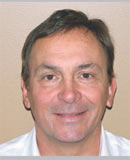LED Dental Inc and LED Medical Diagnostics Inc
Vancouver, British Columbia, Canada
Interviewee:
Steve Semmelmayer, President and CEO
|
QUESTION NO. 1
Inside Dentistry (ID): The dental industry and the oral healthcare arena have been changing rapidly within the past 5 to 10 years. What do you see as the most significant of those changes?
Steve Semmelmayer (SS): We believe that the most important—and most exciting—change in our industry is the fact that dental practitioners are increasingly providing not just for the oral health of their patients, but for their systemic health as well. For some time there has been considerable documentation of the connection between periodontal health and cardiovascular health. Perhaps even more dramatically, our product, the VELscope® Oral Cancer Screening System, can help enable dental practitioners to discover early-stage cancer as well as precancerous tissue, and to potentially save lives in the process.
QUESTION NO. 2
ID: In what ways—both internally and in dealing with the broader oral healthcare marketplace—has your company responded to these changes?
SS: Our company exists because of the simple fact that oral cancer is a very serious problem in this country. One American dies of oral cancer every hour of every day, and the estimated incidence of oral cancer is three times that of cervical cancer. Now the incidence rate is growing, in part because oral cancer is caused not just by excessive use of tobacco and alcohol, but by certain strains of sexually transmitted human papillomaviruses (HPV) as well. The key to fighting oral cancer is early detection. The bad news is that roughly two thirds of the time oral cancer is discovered in late stages, when the 5-year survival rate is only about 22%. The good news is that the VELscope can literally help dentists and hygienists save lives by discovering early-stage cancer as well as precancerous tissue. In addition, this device can be used by otolaryngologists and head-and-neck surgeons to ensure that all of the targeted tissue is removed if surgery is indicated.
QUESTION NO. 3
ID: What do you see as your biggest responsibility to the marketplace, and why does your choice rank as your #1 priority?
SS: Our mission is not to build market share; it is to build the market—in our case, the market for oral cancer screening systems—and, in doing so, to save lives. We, as well as many independent health- care experts, believe that all dental practices should be conducting annual oral cancer examinations on all of their patients ages 18 and older. This is the right thing to do in terms of the patients’ welfare, and it can actually be very convenient and very profitable from the practice’s standpoint as well. Our job is to make both practitioners and consumers realize what a win-win opportunity this can be.
QUESTION NO. 4
ID: What product categories—whether preventive, restorative, operative, auxiliary, diagnostic, etc—do you feel are most in need of innovation based on what’s currently available?
SS: I don’t think there is a category in our industry that does not need continued innovation. In the United States, as well as many other developed countries, the number of dental practitioners and the hours worked per week are decreasing while wthe demand for dental procedures is increasing. We are facing a real “What’s wrong with this picture?” situation, and the only solution is for manufacturers to continually invest in innovative technologies that allow practitioners to be more productive—to do more things more effectively and in less time.
QUESTION NO. 5
ID: What do you see as the best approach to the research, development, testing, and ultimate delivery to the market of such needed advancements?
SS: I would say there are three keys. One is for us as manufacturers to maintain an ongoing and open dialogue with practitioners. This allows us to maintain a close watch on their needs and to make sure that the new products we are bringing to the market meet those needs. The second is to make sure we, our distributor partners, and the dental industry media are effectively getting the word out to make practitioners aware of our advancements and the benefits they bring. The third is for practitioners to actively seek—and keep their minds open to—new and better ways of caring for their patients.
QUESTION NO. 6
ID: There are many challenges facing dentistry and oral healthcare today. How is your company helping to resolve them?
SS: We feel that oral cancer is the most serious issue in oral healthcare. The best thing we can do is focus on what we do best. We are a discovery company, and we are completely committed to helping dental professionals save lives by discovering early-stage oral cancer as well as precancerous tissue. Moreover, we help them do that with exceptional convenience for both their patients and their staff, and with very favorable economics for the practice.




